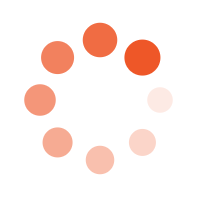Should Your Company Explore Immersive Technologies in Product Development and Prototyping?
Immersive technologies offer the ability to visualize, test, and refine products in a virtual environment, providing faster iterations, reduced costs, and better collaboration across teams.
Augmented reality (AR), virtual reality (VR), and mixed reality (MR) are increasingly becoming powerful tools in the fields of product development and prototyping. But how do you know if your company should start exploring immersive technologies in these areas?
As companies strive to provide faster iteration cycles, reduce costs, improve collaboration, and enable real-time feedback, how do you know if it's the right time to integrate immersive technologies into your product development and prototyping strategy?
Here are the key signs that suggest it’s time to consider AR, VR, or MR for your efforts.
What is Immersive Technology? Immersive Technology is the interaction of advanced software, devices, and data allowing users to experience information in new and empowering ways. Augmented Reality, Virtual Reality, and Mixed Reality from Boston Engineering are tools available today to elevate your organization’s capabilities, competitiveness, and agility.
Immersive Technology addresses today’s operational, service, and sales challenges with a nod to the future of business: better information and faster delivery that strengthens companies against uncertainty, while building competitive advantage.
Learn more about Immersive Technologies at Boston Engineering

Signs your organization should explore immersive technologies in product development and prototyping
Lengthy Product Development Cycles
If your company experiences lengthy product development cycles due to the need for physical prototypes and frequent design revisions, immersive technology can significantly streamline this process.
Signs to watch for:
-
- Frequent delays in prototyping due to physical mock-ups: If creating and revising physical prototypes takes considerable time and resources, VR or MR can enable virtual prototyping, allowing teams to create, modify, and test designs in a fraction of the time.
-
- Complex or iterative design processes: If your product designs require multiple iterations, immersive technology lets you make changes and view updates instantly, reducing the need for physical reworks.
High Prototyping Costs
Traditional prototyping can be costly, especially if your products involve complex components, specialized materials, or large-scale models.
Signs to watch for:
-
- Rising costs for materials and manufacturing of physical prototypes: Immersive technology can replace physical prototypes with digital simulations, helping your team visualize and manipulate 3D models in a virtual space, eliminating material waste.
-
- Frequent production of multiple prototypes for different stakeholders: If you often create prototypes for stakeholders, immersive technology can present a single 3D virtual model that can be customized or modified without the expense of building multiple physical versions.
- Frequent production of multiple prototypes for different stakeholders: If you often create prototypes for stakeholders, immersive technology can present a single 3D virtual model that can be customized or modified without the expense of building multiple physical versions.
By reducing material and production costs, AR/VR prototypes allow you to test multiple versions of your product at a lower cost.
Collaboration Challenges Across Teams
For companies with geographically dispersed or cross-functional teams, collaboration can be a significant challenge. Immersive technologies can break down these barriers by offering shared virtual spaces for real-time interaction.
Signs to watch for:
-
- Difficulty aligning remote or global teams around design concepts: If your teams are located in different regions or work remotely, immersive technologies provide a virtual environment where team members can collaborate in real-time, review designs, and make changes together.
-
- Lack of real-time feedback during design reviews: VR and AR allow for interactive feedback sessions, enabling stakeholders to explore designs in a 3D space, make suggestions, and implement changes on the spot, ensuring everyone is on the same page.
Using immersive technology for collaboration ensures seamless communication between teams and faster decision-making, regardless of their location.
Complexity in Product Design
When products are highly complex or involve intricate systems, traditional design and prototyping methods may fall short. Immersive technology allows companies to visualize and interact with their products in ways that CAD models and 2D representations cannot.
Signs to watch for:
-
- Complex products with multiple components or moving parts: If your products have complex internal structures or moving parts, VR simulations can offer a 360-degree, interactive view that allows you to explore every aspect of the product in detail.
- Challenges understanding or conveying design intricacies using traditional methods: If your team struggles to convey the full scope of a product’s design, immersive technology allows stakeholders to walk through virtual prototypes, offering a hands-on understanding of the final product.
For intricate designs, immersive technologies help teams visualize every detail, leading to more informed decision-making and fewer errors during production.
Need for Faster Time-to-Market
In industries where speed to market is critical, reducing the time between concept and production is essential. Immersive technology can drastically speed up the development process, particularly in industries such as automotive, aerospace, and consumer electronics.
Signs to watch for:
-
- Market pressure to release products quickly: If your company competes in a fast-paced industry where innovation is key, VR/AR can streamline the design and prototyping phases, helping you get products to market faster.
-
- Bottlenecks during the prototype testing phase: If your team often faces delays in testing prototypes or gathering feedback, immersive technology allows for rapid virtual testing and iteration, speeding up the entire development process.
Difficulty Gathering Customer Feedback on Prototypes
If your company struggles to collect meaningful feedback from customers or stakeholders during the prototyping phase, immersive technologies can bridge this gap by providing realistic, interactive experiences.
Signs to watch for:
-
- Challenges in getting meaningful customer feedback from static prototypes or CAD designs: Immersive technology allows customers and stakeholders to interact with a product as if it were real, providing more accurate and actionable feedback.
-
- Difficulty visualizing the end product: Customers or stakeholders may find it challenging to envision the final product from traditional drawings or models. VR/AR allows them to experience the product in a fully immersive environment, offering better insight into its form and function.
By providing immersive product previews, your team can gather more valuable feedback, resulting in a better final product.
High Risk of Errors or Design Flaws
Products with stringent performance, safety, or compliance requirements must undergo rigorous testing to avoid errors. Immersive technologies offer the ability to test designs in real-world scenarios, helping to detect potential issues early on.
Signs to watch for:
-
- Frequent discovery of design flaws late in the development process: If your team often finds design flaws after a prototype has been produced, VR simulations allow for virtual testing early in the design process, reducing the risk of costly errors.
-
- High costs or risks associated with testing physical prototypes: Immersive technologies can simulate real-world conditions to test how a product will perform, without the risk of damage or failure during physical testing.
Immersive technology enables virtual testing in controlled environments, minimizing the risks of defects and ensuring the product is ready for production.
Desire for Innovation and Differentiation
If your company prides itself on innovation and wants to differentiate itself in a competitive market, immersive technology offers a cutting-edge solution.
Signs to watch for:
-
- A need to stand out from competitors in the product development process: Immersive technologies give you an edge by allowing for more innovative design approaches, faster prototyping, and greater collaboration across teams.
-
- Desire to adopt forward-thinking technologies for future-proofing: Companies aiming to stay at the forefront of technological advancements can leverage AR/VR to create more efficient, flexible, and scalable product development pipelines.
Download the Latest Immersive Technology Whitepaper from Boston Engineering

Augmented Reality (AR) is revolutionizing the way we interact with digital content, merging the physical and digital worlds in innovative ways. In this white paper, we provide a comprehensive overview of AR, exploring its definition, potential uses, challenges in adoption, and strategies for companies to embrace this transformative technology.
Download to begin Embracing the Future

Is It Time to Explore Immersive Technologies in product development and prototyping?
Immersive technologies like AR, VR, and MR are rapidly reshaping the landscape of product development and prototyping. By providing faster iteration cycles, reducing costs, improving collaboration, and enabling real-time feedback, these technologies offer significant advantages. If your company is experiencing lengthy development cycles, high prototyping costs, collaboration challenges, or a need for greater innovation, it may be time to explore immersive technology solutions.
By leveraging immersive technology, your company can stay ahead of the competition, bring products to market faster, and create better products through more efficient and informed development processes. Start by assessing your current challenges and use cases—if you spot any of the signs mentioned in this post, immersive technologies may be the key to accelerating your product development success.
Ready to Start the Immersive Technology Journey?
With the capability of saving time and money in operations, improving field service, and creating efficiencies in your sales process-- Immersive Technologies are currently available to provide an advantage against competition, and a buffer against uncertainty.
Augmented Reality seamlessly blends the physical and virtual, enhancing user experiences by providing additional information and digital elements without completely detaching them from their surroundings. This intuitive integration makes AR an accessible and cost-effective solution across various industries, from education to healthcare to gaming. By overlaying digital content onto the real world, AR empowers users to access valuable insights and engage with information in a more natural and contextual manner.
Virtual Reality offers a completely immersive experience, transporting users into captivating digital realms. VR's high level of engagement and interactivity makes it an ideal medium for applications that require intense focus, such as gaming, training, and therapeutic interventions. By fully engaging the user's senses, VR has the power to inspire, educate, and transform the way we approach challenges and opportunities.
Mixed Reality seamlessly blends the physical and virtual, enabling users to interact with digital elements as if they were physical objects. This enhanced level of interaction and collaboration opens up new possibilities for product design, maintenance, and training. MR is revolutionizing the way we tackle complex tasks and collaborate across different locations.
Whether you’re seeking to meet rising manufacturing demands, offer more efficient training and service delivery, or revamp marketing & sales efforts, Boston Engineering has the tools to tackle these issues head on and incorporate your specific needs. Let us help you create the roadmap to success: Get the full ROI through Immersive Technologies by working with Boston Engineering.
Let's start the Immersive Technology Conversation

No matter the challenge, our team possesses the expertise in the engineering disciplines and technologies you need to bring your vision to life. Impossible Challenge? Try Us.
Imagine your Impact: Stay up-to date- with the latest insights and trends we're watching. Add your email address below and sign up for a Monthly Summary of our most impactful posts!












